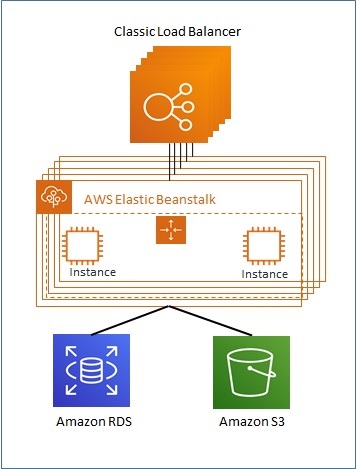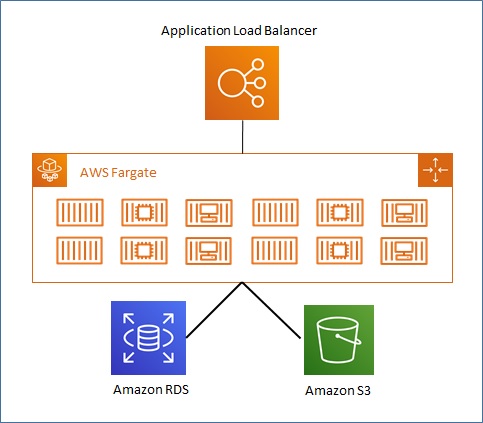AWS Partner Network (APN) Blog
How Swisscom Saved DroneAnalytics 60% on AWS Services by Using the AWS Well-Architected Framework
By Philipp Kislig, Sr. Product Manager at Swisscom
By Wuming Zhang, Sr. Cloud Architect (and APN Ambassador) at Swisscom
By Andrew Robinson, Sr. Solutions Architect at AWS
 |
 |
 |
DroneAnalytics, launched in 2015, is a Swiss company offering hardware and software solutions for drones and connected objects. One of their applications, DroneLogbook, helps customers simplify planning, tracking, and reporting. It runs entirely on Amazon Web Services (AWS).
DroneLogbook was initially designed to rely on AWS Elastic Beanstalk to manage its infrastructure. Elastic Beanstalk also provided integrated auto-scaling, deployment, and orchestration features to DroneLogbook.
For their database, DroneAnalytics selected Amazon Relational Database Service (Amazon RDS) for MySQL. For long-term cold storage, they chose Amazon S3 Glacier.
DroneAnalytics noticed that as their DroneLogbook business grew, their AWS spend increased. They decided to dive deeper into their workload and how it operated, to find cost savings and scalability improvements that could be implemented. DroneAnalytics approached Swisscom for an AWS Well-Architected Review.
Swisscom is a leading telecom provider headquartered in Ittigen, Switzerland. They are an AWS Partner Network (APN) Advanced Consulting Partner and member of the AWS Well-Architected Partner Program.
Swisscom’s business division experts are experienced in AWS Well-Architected Reviews. They specialize in cost savings and lowering total cost of ownership (TCO), Internet of Things (IoT), and mobile, making the team at Swisscom well suited to support DroneAnalytics in their deep dive.
In this post, we describe the partnership between Swisscom and DroneAnalytics, and how AWS Well-Architected helped the customer save more than 60 percent on their AWS spend.
About the Partnership
Over a one-day engagement, Swisscom conducted a Well-Architected Review with DroneAnalytics at their headquarters with the team who designed, built, and now operate the DroneLogbook product. The Well-Architected Review was provided in a bundled offering with Swisscom professional services consultancy days.
By conducting a review focused on cost saving and scalability, Swisscom was able to quickly highlight the biggest risks that needed to be addressed in the DroneLogbook workloads. They also made sure their optimizations did not impact day-to-day business operations.
Swisscom started with the best practices of the AWS Well-Architected Framework. They combined these with financial services operations (FinOps) recommendations, and their knowledge and experience operating and building on AWS.
Swisscom proposed short, medium, and long-term improvements to help DroneAnalytics across the five pillars of Well Architected.
What DroneLogbook Does
DroneLogbook is a software solution that helps customers simplify their drone operations. It provides tools to manage operations in a single, convenient platform. This helps customers focus on flying instead of planning, tracking, and compliance.
DroneLogbook supports auto-import from eight different drone manufacturers. It can import their flight logs in more than 50 different formats, or let them manually enter their own flight details.
The product combines this flight data with local weather, pilot, maintenance and inspection, project, and planning data in a single, consolidated platform for drone operators.
Figure 1 – Three ways to import flight data into DroneLogbook.
A significant overhead for drone operators is compliance reporting to flight regulators such as the FAA, CAA, CASA, and other local and regional bodies. DroneLogbook can take all of the flight data and automatically generate these compliance reports for customers, helping them focus on their business.
Existing Architecture and Objectives
One of the key goals for DroneAnalytics was to reduce the cost of operating their workload on AWS. They had seen significant growth other the last year and wanted to carefully manage their costs while continuing to grow and meet customers’ needs.
DroneLogbook white labels its software so customers can rebrand it as theirs, supplying its DroneAnalytics software to nearly 40 different customers.
In their existing configuration, each customer had their own Classic Load Balancer and AWS Elastic Beanstalk environment, creating a lot of management overhead. They had an Amazon RDS MySQL database in a configuration with multiple AWS Availability Zones and different databases for each customer.
Static content was stored in Amazon Simple Storage Service (Amazon S3) buckets, and then aged out to Amazon S3 Glacier over time. Their application was written mainly in PHP.
Figure 2 – Components of original DroneLogbook, before AWS Well-Architected Review.
Swisscom identified two major ways to improve the DroneAnalytics architecture:
- Consider adopting different load balancers to simplify and reduce cost.
. - Migrate to a containerized approach to increase elasticity and make the architecture more event driven.
The Resulting Architecture
In the resulting architecture, the workload was migrated to use AWS Fargate to host the application, rather than AWS Elastic Beanstalk.
Users accessing the workload now did this through an Application Load Balancer instead of the Classic Load Balancer. The data storage tier remained the same, running on Amazon RDS and Amazon S3 Glacier. This helped significantly with the migration, as all of the state for the application was stored in the data tier, making the application stateless.
The following illustration represents the architecture Swisscom designed in collaboration with DroneAnalytics.
Figure 3 – Components of new DroneLogbook, after AWS Well-Architected Review.
Load Balancing
When initially deploying their workload, DroneAnalytics put a Classic Load Balancer in front of their compute resources. Their compute resources were managed by AWS Elastic Beanstalk and they made this trade-off because they wanted to leverage the easy-to-use nature of Elastic Beanstalk.
At the time, there was no integrated support for any other type of load balancer.
During the review, Swisscom discovered that DroneAnalytics was spending more money on their Classic Load Balancers than on all of their Amazon Elastic Compute Cloud (Amazon EC2) resources. At this point, they were running nearly 40 classic load balancers in their environment.
Swisscom was able to propose and migrate DroneAnalytics to a single Application Load Balancer. This reduced management overhead and simplified the architecture. It also reduced the attack surface from over 40 endpoints to just one.
As part of their solution, DroneAnalytics used a wildcard certificate on the Application Load Balancer. They also separated traffic based on the host header so they could route traffic from different hosts to different containers. These two changes allowed them to migrate to a single Application Load Balancer in each region where they operated.
Application
In its original architecture, DroneAnalytics used AWS Elastic Beanstalk to deploy DroneLogbook because it managed so much of the overhead for its PHP application. In the new architecture, they wanted to reduce costs, but without incurring additional overhead.
Swisscom helped them take the existing PHP application, include the required dependencies, and easily containerize it into Docker containers. By leveraging more managed services, DroneAnalytics was able to spend less time managing infrastructure and more time developing new features and functionality in the application.
AWS Fargate was selected to operate the containers because it abstracted away the majority of the heavy lifting, and simplified the migration process. As a result, DroneAnalytics engineering teams didn’t need to spend time learning how to build, deploy, and manage their own cluster.
Instead, they were able to focus on building the application, not managing infrastructure. AWS Fargate gave DroneAnalytics the flexibility to use Docker containers, Kubernetes containers, or both.
Cost Savings
DroneAnalytics migrated from over 40 Classic Load Balancers to one Application Load Balancer, and from AWS Elastic Beanstalk to AWS Fargate. Those two changes, combined with AWS Savings Plans, saved DroneAnalytics more than 60 percent in their AWS spend.
They saved that much while reducing management overhead, improving the company’s security posture by limiting their attack surface, and keeping (or improving) levels of performance and reliability.
Additional Benefits
Swisscom also suggested smaller, incremental changes to help DroneAnalytics minimize risk within their workload:
- Implement new, more specific identity and access management (IAM) roles based on the principle of least privilege (PoLP).
. - Enable Amazon CloudWatch log streaming from Application Load Balancer and AWS Fargate. Also, integrate Amazon CloudWatch Logs with application-level data to provide near real-time workload performance metrics.
. - Tune Amazon S3 lifecycle policies to move data to Amazon S3 Glacier on a more frequent basis, and expire multipart uploads to help reduce costs further.
Conclusion
The consulting services from Swisscom, based on the AWS Well-Architected Framework, enabled the team from DroneAnalytics to more properly monitor their consumption of AWS services.
By leveraging Well-Architected best practices and working with Swisscom, DroneAnalytics saved 60 percent on their AWS spend, whilst maintaining the same or better levels of operational efficiency, reliability, and performance.
They were able to take advantage of using AWS Fargate, removing overheads from managing their workload, and allowing their teams to focus on adding new features and getting those features to market quickly.
While the original architecture used by DroneAnalytics was right for them at the time, their requirements evolved just as their business evolved. With AWS Well-Architected, Swisscom was able to highlight this, and worked together with DroneAnalytics on modernizing and optimizing their workload to meet requirements.
Swisscom – APN Partner Spotlight
Swisscom is an AWS Well-Architected Partner. They offer robust expertise ranging from the design, implementation, migration, and maintenance of customers’ cloud solutions.
Contact Swisscom | Practice Overview
*Already worked with Swisscom? Rate this Partner
*To review an APN Partner, you must be an AWS customer that has worked with them directly on a project.



